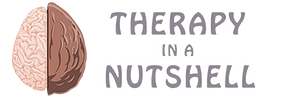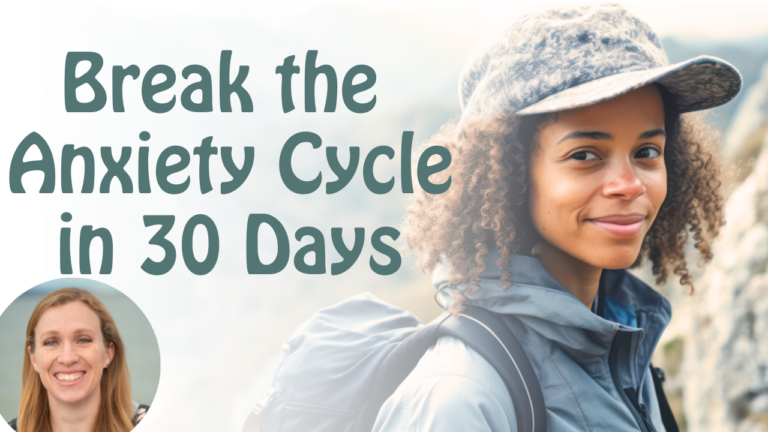If you’ve ever had panic attacks on a plane, or just have panic attacks in general, you’re gonna want to hear about this story sent in from one of my viewers.
We’re going to go through his story step-by-step and I’m gonna show you exactly what he did to end his panic attacks after 30 years of panic disorder. And by the end of this video, you’ll have a blueprint you can follow to help calm your panic attacks.
The Advice Given On Panic Attack Backfires
Most of the advice you’ve been given about panic attacks backfires. Think about it, You’re in this intense panicky state and everyone tells you that you just need to take slow breaths, to calm yourself down. And if that actually worked for you, you wouldn’t still be here watching this video! The sneaky thing about panic attacks is that the more you try to control your symptoms, the more you accidentally tell your brain that those symptoms are dangerous, and it makes your heart beat faster and breathing speed up and you start to feel dizzier and more panicky.
Here’s what Jon wrote me:
(Jon)
“I have suffered with panic disorder for 30 years, usually triggered by travel, and have been told over and over again that I needed to learn how to calm myself down. I learned to meditate, use breathing techniques, spent countless hours in therapy, tried hypnotherapy/EMDR/EFT etc, but nothing worked completely. I certainly became a more chilled and mindful person and got better at managing the symptoms, but I still lived in fear of the ‘what ifs’, the ‘super panic attack’ that my skills couldn’t control.”
So. Jon got all the common advice you’d expect about stopping a panic attack, which basically consists of, “Geez, just calm down bro! Take a deep breath!” Surprisingly common advice, which those of you watching this video already know, is unsurprisingly, unhelpful. But then Jon had this realization:
I had read the advice of running toward and embracing anxiety in the book DARE by Barry McDonagh, but now I realize that I didn’t get it at all. I was trying to embrace it by being zen-like, observing and letting the feelings move through me, but I was still giving the feelings ultimate control and treating them as something to endure.
Two weeks ago I was due to fly on a family holiday, from the UK to Austria, and I was beside myself with anxiety. A fellow P(anic Disorder) sufferer even gave me some Valium which I was planning to take as a last resort, but the day before we left I stumbled across your video and it finally clicked. Stop trying to calm yourself. Stop trying to distract yourself. I wrote down my panic stories and gave them numbers.
Ok. Let me explain what John is talking about by first explaining what panic stories are. Panic stories are the stories.., the scenarios… the things… you tell yourself when you start experiencing the physical symptoms of panic. Here’s some examples:
- You’re stressing over a deadline at work. You start to feel nervous in your body. So your panic story may sound like.., “It would be awful if my anxiety took over right now.”
- Or, you have a fear of spiders, and you’re staring at one right now. You notice your breathing is becoming quicker and more shallow, so your story may be.., “I’m gonna pass out.”
- Or, maybe you’re trying to get healthy by starting to workout again, and you notice your heart is pounding, So your panic story may be.., “I’m having a heart attack!”
- I have to make these feelings go away, I have to force myself to calm down!
These panic stories typically follow a pattern. There’s the trigger…like from these examples, the work deadline, the spider, the workout. Then there’s the physical symptoms…The nervousness, the shallow breathing, the heart pounding. And then there are the panic stories which is your brain trying to convince you that those sensations are dangerous, and that you have to control your physical response, but trying to control your panic just makes your brain feel like you’re in MORE danger, so it increases your anxiety, and that spiral fuels panic attacks. So the first skill is to recognize these stories as being stories and not necessarily true.
So going back to John’s story, we know he gets triggered when he flies by plane. When he’s on the plane he starts to experience physical symptoms of anxiety, and in the past, he’s tried all kinds of strategies to calm down, but that fueled the panic attacks. So this time he tried something different.
I got on the plane and as the door closed the anxiety began to rise. (He started thinking, “Uh-oh, I’m feeling my heart pound. What if I have a panic attack! That would be catastrophic! I have to make myself calm down” but instead of believing that he just labeled it- “Ah, this is story number 2”, I thought, and I looked up, turned off my headphones, and started pumping my legs and tapping my knees and trying to get myself agitated so that I could create the fabled ‘super panic attack’, but it never came, the anxiety slowly drifted away and I went back to watching Netflix.
Overcoming Panic Attacks
So that’s the second essential skill, instead of engaging in a massive struggle with your sensations, trying to force them to go away, show your brain you’re actually safe by just saying “Hmm, this is a curious sensation. I can handle feeling my heart pound, I can handle feeling dizzy, bring it on! Let’s see if we can make it more intense.” If you want to stop panic, you have to be willing to have it. So you can break the cycle of anxiety and panic by just trying to make yourself feel panicky. What you’re doing is quenching the cycle of accidentally telling your brain that those sensations are dangerous. Here’s how Jon did it:
I repeated this exercise every time I felt it rising and when the plane landed my mind was blown. I had just flown without having a panic attack. How was this even possible? There were more occasions during the holiday when anxiety threatened me with a panic attack but I dealt with it in the same way; the more I willed it to happen, the more I tried to grasp it, the further away it felt. I almost cannot believe it was so simple to confront, all along it was just a paper tiger.
So, thank you so much for this video. It sounds trite to say it has changed my life, but it really has. I grieve for the experiences I have missed and the time I have lost to Panic Disorder, but I can now look to the future with hope.
Jon
So here’s what Jon did: 1- He learned to question his stories about panic, that the physical sensations are dangerous or that feeling panicky is catastrophic. 2- He dropped the struggle to force himself to calm down and instead 3- said “Bring it on” by willing himself to have panic symptoms, he showed his brain that they are actually safe, and that stopped the panic attack cycle.
So cool Jon! Thank you so much for sharing your example! If you want to watch the whole series Jon was referring to then, google “Therapy in a nutshell panic attack playlist or click the link in the description ”
That’s where I teach The difference between an anxiety attack and a panic attack, How to make space for your sensations and break the cycle of anxiety and panic. Plus two practical walkthroughs so you can practice. Oh and, if you found this video helpful and you want to learn more about how your emotions work, or how to deal with your own anxiety or depression, be sure to check out my courses on “How to Process Emotions” or “Breaking the Anxiety Cycle” Hope that’s helpful, take care!
Click below to check out the course, Break the Anxiety Cycle in 30 Days.





